
In terms of the most famous horse races in the UK, there is one event which puts all others firmly in the shade. Whatever measure is used, be it number of viewers, betting turnover, newspaper column inches, or simply how many people have actually heard of the race, the Aintree Grand National comfortably dwarfs all other events – whether they be fellow National Hunt contests, or flat races.
It may not be the absolute best race in terms of the quality of performer on show – jumps fans will rightly point to the Cheltenham Gold Cup in that regard; whilst flat aficionados will likely sing the praises of the Epsom Derby – but this Merseyside marvel is undoubtedly the biggest race of them all… and by some distance too.
As with many things, when achieving the type of widespread acclaim and burgeoning popularity such as that gained by the Grand National, the copycats are never too far behind. As we shall see, the Aintree spectacular may remain both the original and the best, but it is far from being the only “National” on offer on the British and Irish racing scene.
What Is a Grand National?

It is the most watched, bet upon, talked about and imitated race in the country – but what actually is the “Grand National”? And, why has it become so popular?
How They Started
As the race title would suggest, the Aintree contest is a big race of national significance, although when William Lynn founded the event back in 1839, even he likely couldn’t envisage just how popular the race would become.
Whatever Lynn’s hopes were when designing the race, he did at least strike the right note in terms of the type of contest likely to resonate most strongly with the public. Historically, the sight of brave chasers and jockeys, doing battle over demanding distances and imposing fences, has proven to be a big draw for racing fans. And, there are few, if any, contests that provide so tough a challenge as the Grand National, either in terms of the trip, or the fences to be tackled.
Length & Obstacles
At a monster distance of four miles and two and a half furlongs, the Grand National is the longest race of the British season, whilst the fences on show are simply unlike those to be found at any other track. They may have been made considerably easier in recent times, but the likes of Becher’s Brook, the Chair and Valentine’s are still formidable obstacles, whose names have become almost synonymous with the sport. These most famous of fences are a huge part of what has made the race resonate so strongly with the public at large.
So, what exactly is a “Grand National”? Put simply, it is a signature staying chase event which operates towards the extreme end of the racing spectrum. Nowhere else in the UK or Ireland are the demands on either stamina or jumping ability so searching as they are at the Aintree original, but this staying and jumping formula has its fingerprints all over the other Nationals to take place on British or Irish Shores… of which there are many.
Here we take a look at each of the “National” races to take place in the UK and Ireland each year, from the big to the small, and on to the more unusual!
Major UK Nationals

The headline act on the British Grand National scene is of course the Aintree event in April, but each of the other three home nations do also boast their own staying showpiece, and each of the three is a pretty big deal in its own right. Here we take a closer look at the four “major” UK and Irish Grand Nationals.
| Race | Course | When | Distance | Class | Prize Money |
|---|---|---|---|---|---|
| Grand National | Aintree | April | 4m2½f | Grade 3 | £1 million |
| Irish Grand National | Fairyhouse | Easter Monday | 3m5f | Grade A | €500,000 |
| Scottish Grand National | Ayr | April | 4m | Grade 3 | £215,000 |
| Welsh Grand National | Chepstow | 27th December | 3m6½f | Grade 3 | £150,000 |
English Grand National
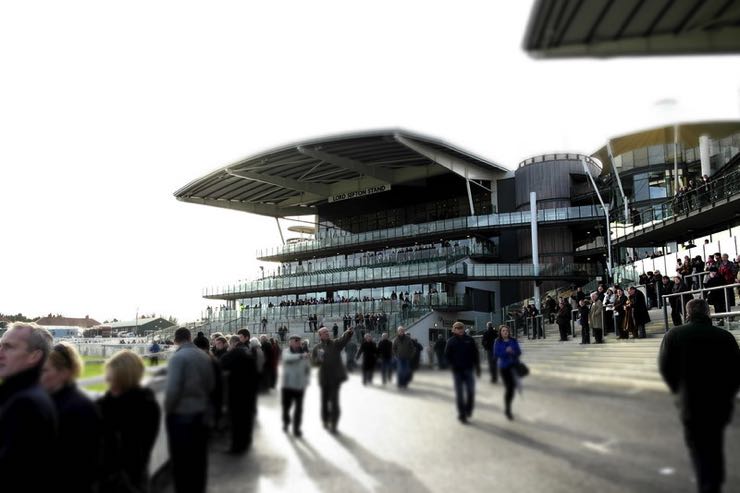
Where else to start than with the most famous horse race in the world. There are those who argue that the inaugural Grand National actually took place in 1836, but the first edition recognised by the record books is the 1839 edition won by a horse going by the name of Lottery – pretty apt given the huge popularity in sweepstakes which now surround the event, and the common “anything can win” mantra. Run over two circuits of the famous Grand National course, and taking in thirty of the most famous fences in the game, this £1 million monster of a race is one of the single biggest events of the British sporting calendar.
Held at Aintree in April each year, the race is the headline act of the top class three-day Grand National meeting, which attracts maany of the stars of March’s Cheltenham Festival. First broadcast live on free to air TV in the UK in 1960, it is fair to say its popularity has grown significantly over time. With up to 600 million viewers hailing from 140 different nations estimated to tune in each year, the jewel in Aintree’s crown is now a truly global phenomenon.
A handicap event open to chasers aged seven years and older, it is the superstars of yesteryear such as three-time winner, Red Rum, and the modern era’s dual hero, Tiger Roll, who have provided a large part of the narrative which has contributed to the enduring appeal of the great race.
Red Rum: Winner in 1973, 1974 & 1977
Tiger Roll: Winner in 2018 & 2019
Another of the major reasons for this popularity is the truly unique spectacle it provides when it comes to the famous fences of the National Course. A standard National Hunt fence will be around four feet six inches in height, however the Grand National obstacles reach up to five feet two inches, and have additional difficulties such as the differences in height on the take-off and landing sides – as demonstrated by the Chair and Becher’s Brook – or the challenge of jumping whilst rounding a corner which is provided by Canal Turn.
There are other races on this list which just about match the Grand National in terms of distance, but there are none that come close – at least in the UK – to replicating the most famous obstacles in the sport. From a visual, dramatic and punting perspective, the Aintree Grand National is the most spectacular race of the season – and is likely to remain so for some time to come.
Irish Grand National

Given just how much the Irish love their racing, it is no surprise to learn that our friends from the Emerald Isle have their very own Grand National. The fences aren’t quite as big, and the trip is not quite so far as in the Aintree version, but this Easter Monday treat is nevertheless a huge race in its own right, and one of the most valuable of the Irish National Hunt season.
Held on the third and final day of the Easter Festival at the County Meath venue of Fairyhouse, in common with the rest of the “National” horse racing events featured in this article, this is a handicap contest. First run in 1870, the race is open to runners aged five and older and sees the contenders tackle a 24 standard fences over a trip of three miles and five furlongs.
In large part due to the proximity of the two races, no horse has ever managed to win the English and Irish Nationals in the same season, but a number have achieved that career double, including Rhyme ‘N’ Reason, Bobbyjo and Numbersixvalverde.
Affectionately known as “Dubs Day Out” due to the huge crowds the race attracts from Dublin, Irish National Day is invariably one of the most watched and bet upon days of the season, and a race not to be missed for fans of staying chases.
Scottish Grand National
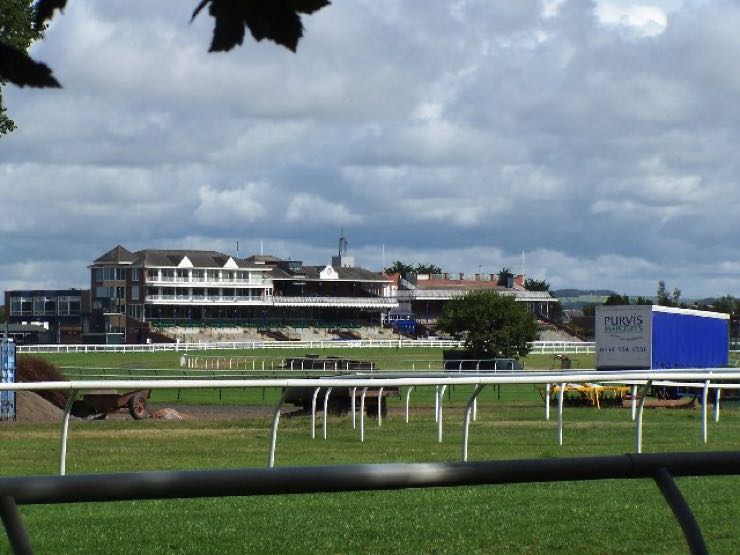
Next best in the list of the domestic Grand Nationals – at least in terms of the prize money on offer – is Scotland’s biggest race of the season. Also backed by a Festival – in this case a two-day affair – the highlight of the National Hunt season at Ayr takes place in April each year – hot on the heels of the Aintree event.
Initially run at Houston racecourse as the “West of Scotland Grand National” in 1858, the obstacles in these early days largely consisted of unforgiving stone walls. Moved to the attractively named Bogside Racecourse in 1867, it wasn’t until the closure of that track in 1965 that the race then took up residence at Ayr, where it has remained ever since.
In common with both the English and Welsh Grand Nationals, Scotland’s version is a Grade 3 Handicap contest. Open to chasers aged five and older, there are 27 standard fences and a trip of four miles standing between the competitors and victory.
The Scottish National has proven to be a useful pointer towards success in the Aintree version, with Music Hall, Little Polvier and Earth Summit amongst the horses to win both races. Just the one horse has managed to land both flagship events inside the same season though – the legendary, Red Rum who did the double in 1974.
Welsh Grand National
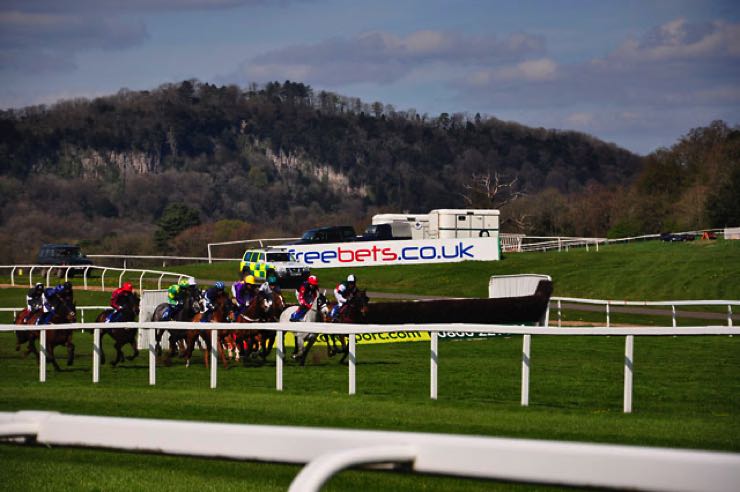
Thanks to the summer jumping programme, National Hunt racing does take place just about all year round in the UK, but the bulk of the main season is still described as running from November to April. As such, the first of the season’s major Nationals is the Welsh version, which traditionally takes place at Chepstow on the 27th December.
The last on the scene of the four biggest Nationals, the race nevertheless has plenty of history behind it having made its debut back in 1895. That history includes changes both to the venue, and the time of year at which the race takes place. Initially held at the now defunct track of Ely, and run over the Easter Period, it wasn’t until 1949 that the race first made its debut at Chepstow, with the move to late December following in 1979.
Open to runners aged four years and older, this three mile, six and a half furlong Grade 3 Handicap is a large component of what makes the festive period such a rewarding time of year to be a racing fan. One of the highest class staying handicap chases of the season, the race has thrown up a number of subsequent Cheltenham Gold Cup winners in the past, whilst Corbiere, Earth Summit, Bindaree and Silver Birch all went on to claim success in the Aintree Grand National.
UK Regional Nationals
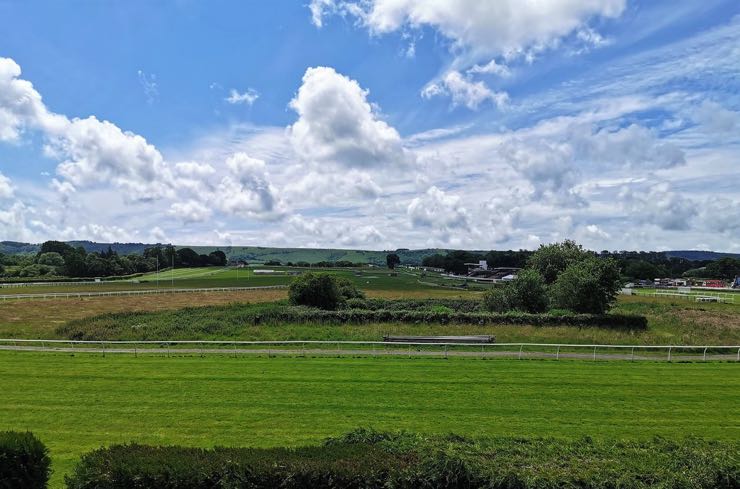
Whilst the Aintree version in particular and, to a lesser extent, the three other major Nationals, are the races which generate most of the betting interest and headlines over the course of the season, that quartet makes up only a mere fraction of the total number of “National” races to take place each year. When looking through the fixture list, it soon becomes clear that there are also a whole host of regional editions of the races known as Nationals on offer – both in the UK and in Ireland.
We turn first to those currently held in the UK, of which there are sixteen in all, spanning just about the length and breadth of the country. The Nationals are ranked in terms of 2019 Prize money value – ranging from largest to smallest.
UK Regional Nationals
| Race | Course | When | Distance | Class | Prize Money |
|---|---|---|---|---|---|
| Midlands Grand National | Uttoxeter | March | 4m2f | Listed | £150,000 |
| Scottish Borders National | Kelso | December | 4m½f | Class 3 | £58,000 |
| London National | Sandown | December | 3m5f | Class 2 | £49,000 |
| Edinburgh National | Musselburgh | February | 4m1f | Class 2 | £40,000 |
| Sussex National | Plumpton | January | 3m4½f | Class 3 | £30,000 |
| Norfolk National | Fakenham | May | 3m5f | Class 3 | £30,000 |
| Durham National | Sedgefield | October | 3m5f | Class 2 | £29,000 |
| Cambridgeshire National | Huntingdon | March | 3m6½f | Class 3 | £29,000 |
| Devon National | Exeter | February | 3m6½f | Class 3 | £25,000 |
| West Wales National | Ffos Las | February | 3m4f | Class 3 | £25,000 |
| Somerset National | Wincanton | January | 3m2½f | Class 3 | £24,000 |
| Highland National | Perth | April | 3m6½f | Class 3 | £23,000 |
| North Yorkshire Grand National | Catterick | January | 3m6f | Class 3 | £22,000 |
| Southern National | Fontwell | November | 3m3½f | Class 3 | £20,000 |
| Lincolnshire National | Market Rasen | December | 3m3½f | Class 3 | £19,000 |
| Surrey National | Lingfield | February | 3m5f | Class 3 | £15,000 |
Midlands Grand National
Topping the bill amongst the regional offerings – both in terms of the class of the race and the prize money on offer – is the biggest event of the season at the Staffordshire venue of Uttoxeter. Run over a trip only just shy of that of the Aintree National, this March contest features 24 fences and first appeared on the racing programme in 1969.
No winner of this has gone on to success in the big one on Merseyside, but the Thinker (1986) did land the Cheltenham Gold Cup, whilst Synchronised (2010) added both the Gold Cup and the Welsh Grand National to his haul. Of the regional nationals on either side of the Irish Sea, it is the Midlands Grand National which boasts comfortably the highest profile.
Scottish Borders National
Kelso racecourse is regularly voted one of the most popular small courses in the UK, and each year its big event comes with the running of this four mile and half a furlong, Class 3 handicap in December.
Making its debut in 1997, the race features 24 fences and has been claimed by both Midlands National winner Seven Towers (1997) and previous Welsh National champ L’Aventure, who came home in front in 2009. Neptune Equester (2014, 2015) and Harry The Viking (2016, 2018) meanwhile are the only dual winners of the race as of 2019.
London National
There are a couple of UK capital cities with their very own National contests, the most valuable of which is this event which takes place at Sandown Park each year.
Making its debut in 2008 the Class 2 contest sees chasers aged five and older tackle a trip of three miles and five furlongs, and 24 fences. The 2011 champ Deep Purple is the most talented winner of the race to date, with the Evan Williams runner also scoring twice in Grade 2 company over the course of his career.
Edinburgh National
One of the newest “National” races on the programme is this contest which takes place as part of Musselburgh’s excellent two-day Trials Meeting held in February each year. Featuring a number of trials for the Cheltenham Festival, this four mile, one furlong event was added into the mix in 2017, and designed to add a Grand National Trial to the racing programme north of the border. A Class 2 handicap contest, the event has already proven to be a major draw for the top Scottish and English yards.
Sussex National
The first National of the calendar year comes at the East Sussex venue of Plumpton racecourse. Making its debut in 1999, this Class 3 handicap sees the runners encounter 24 fences over a trip of three miles, four and a half furlongs. Hugely popular with local racegoers, the race has been won by a number of “National” specialists over the years.
The 2010 winner, Master Overseer, went on to claim the Midlands Grand National in 2012; Morney Wing landed both this event and the London National in 2018; and 2020 champ Christmas In April followed up in the Devon National.
Norfolk National
The youngest of the UK Nationals comes in this event held at Fakenham racecourse each year in May. A Class 2 contest open to chasers aged five and older, the race sees the field tackle 22 fences spread over a trip of three miles, five furlongs.
Only making its debut in 2016, the pick of the victors to date is the winner of that first edition, Rebeccas Choice, who had previously filled second spot in the 2013 Midlands Grand National.
Durham National
The North East of England isn’t left out of the “National” scene, with Sedgefield racecourse in County Durham staging this three mile, two and a half furlong, 22 fence affair since its 1995 debut. The race boasts two dual winners in the shape of Mister Muddypaws (1999, 2000) and Royale Night (2014, 2015).
Royale Night also won the Scottish Borders National, whilst Prince of Slane (2005), Lucky Nellerie (2009), General Hardi (2010) and Lackamon (2013) all also claimed top spot in the North Yorkshire Grand National during their careers.
Cambridgeshire National
Early March sees Huntingdon racecourse play host to one of its major events of the season in the shape of this three mile, six and a half furlong Class 3 feature contest. Initially taking place in November when making its debut in 2013, the race was switched to its current springtime slot in 2016 and helps to keep the excitement levels ticking over in the build up to the Cheltenham Festival.
Often only a small field affair – at least in National terms – 2013 champ Soudain is amongst the notable previous winners having also come home in front in the 2012 Lincolnshire National. Huntingdon racecourse itself has a rich National history, having staged the Mascot Grand National between 1999 and 2010!
Devon National
The big race of the season at Exeter comes in February each year, with this three mile, six and a half furlong event proving a big hit with local fans, and those from further afield, ever since making its debut in 2002.
A Class 3 handicap contest featuring 22 fences, both the Jonjo O’Neill runner, Teeming Rain (2009,2010), and Dawson City (2018,2019) have recorded dual successes in the race. Meanwhile 2013 champ Flying Award also came home in front in both the Highland and Somerset Nationals.
West Wales National
Having only first opened its doors in 2009, Ffos Las is one of the newer racecourses in the British Isles. It didn’t take the Carmarthenshire venue long to join in with the “National” fun though, with the track having staged the West Wales National since its inaugural running in 2013.
Now taking place in April each year, this three mile, four furlong event features 22 fences and lists Hennessey Gold Cup winner, Carruthers (2013), amongst its previous winners.
Somerset National
One of the first out of the blocks on the Grand National scene each year is this event from the land of Cheddar Cheese and cider. Having moved around the racing calendar, the Somerset National has now settled into a January slot, providing an early New Year highlight for racing fans.
First run at Wincanton in 2007, this three mile, two and a half furlong Class 2 handicap features 22 fences and lists the Scottish Grand National, Southern National and two-time Becher Chase winner, Hello Bud (2009), on its roll of honour.
Highland National
The most northerly of the UK Nationals takes place at Perth in April. Inaugurated in 2003, this three mile, six and a half furlong Class 3 Handicap features 23 fences, and includes previous Somerset National winner Petite Margot (2011) on its list of previous champs. As of 2019, Laertes is the only multiple winner of the race, having landed back to back renewals in 2008 and 2009.
North Yorkshire Grand National
Another National which comes early in the calendar year is this January contest from Catterick racecourse. The jumps highlight of the year at the North Yorkshire track, this three mile, six furlong, Class 3 handicap made its debut in 2003, and sees 24 fences standing between the competitors and glory.
A number of runners have won both this race and the Durham National at Sedgefield over the years, whilst Philip Kirby’s Little Bruce followed up his win in the 2019 Cambridgeshire National with success in this race in 2020.
Southern National
Having staged an early edition of the Sussex National, which now calls Plumpton its permanent home, Fontwell racecourse sought to have a National contest to call its own. The West Sussex venue then duly received one with the inaugural running of this event in 2002.
Taking place in November each year, this three mile, three furlong Class 3 handicap features 21 fences and boasts the aforementioned Hello Bud, dual hero Peut Etre Sivola (2009, 2010), and Golden Chieftain (2015), who also won the Somerset National, amongst its previous winners.
Lincolnshire National
Market Rasen may be known as one of the sport’s biggest Summer Racing venues, but it also stages a packed winter programme, including this December event. First run in, 1997, this Class 3, three mile, three and a half furlong handicap features 19 fences.
The best winner in the history of the race came relatively early, with Young Kenny (1998) going on to subsequent success in both the Midlands and Scottish Grand Nationals. Victory Gunner meanwhile also deserves a special mention having won the race three years on the trot between 2005 and 2007.
Surrey National
Another modern addition to the National programme comes with this contest which takes place at the dual-purpose venue of Lingfield in February. A Class 3 handicap run over three miles and five furlongs and featuring 21 fences, the race only made its debut in 2013.
It is the very first champ, Emperor’s Choice, who goes down as the best winner of the race to date, with the Venetia Williams star going on to score in the West Wales National, and the Welsh Grand National itself.
Irish Regional Nationals
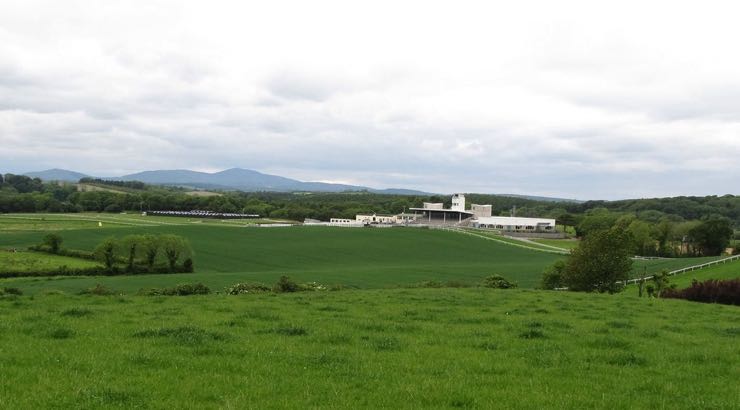
It is of course the big event at Fairyhouse which makes the biggest splash of those contests staged on the other side of the Irish Sea, but just as in the UK, there are a host of other staying events boasting the “National” moniker which take place over the course of the Irish racing season. We take a look a closer at each of those nine races here, again ranking the events in terms of 2019 prize money.
| Race | Course | When | Distance | Class | Prize Money |
|---|---|---|---|---|---|
| Kerry National | Listowel | September | 3m | Grade A | € 188,000 |
| Munster National | Limerick | October | 3m | Grade A | € 94,000 |
| Leinster National | Naas | March | 3m | Grade A | € 94,000 |
| Midlands National | Kilbeggan | July | 3m1f | 5yo+ hcp | € 94,000 |
| Killarney National | Killarney | May | 3m2f | 5yo+ hcp | € 68,000 |
| Ulster National | Downpatrick | March | 3m4½f | 5yo+ hcp | € 47,000 |
| Cork Grand National | Cork | November | 3m4f | Grade B | € 47,000 |
| Mayo National | Ballinrobe | May | 2m7f | Grade B | € 47,000 |
| Connacht National | Roscommon | June | 3m½f | 5yo+ hcp | € 28,500 |
Kerry National
Acting as the headline act at Listowel’s seven-day Festival, which takes place each year in September, the biggest of the Irish regional nationals – at least in terms of prize money – has a rich history in terms of its previous winners. Multiple Grade 1 scorer Dorans Pride, who sauntered home in this in 1997, rates amongst the most talented victors, whilst Rogue Angel (2015) went on to further success in both the Kilbeggan Midlands National and the Irish Grand National.
Most famous of all though is 2002 champ Monty’s Pass who later stormed to a 12-length success in the 2003 Aintree Grand National. Ponmeoath (2007, 2008) and Alfa Beat (2010, 2011) are the only dual winners of the race to date.
Munster National
The west coast track of Limerick stages a handful of high-class Graded contests over the course of the season, but in terms of betting turnover it is this three mile handicap which regularly tops the bill. Taking place in October, this race has perhaps the most spectacular roll of honour of all the Irish regional Nationals.
1996 winner, Feathered Gale, went on to win the Irish Grand National; 1996 Cheltenham Gold Cup king, Imperial Call, came home an easy winner in the event in 1998; whilst non-other than Tiger Roll landed this at odds of 20/1 in 2016 – two years prior to the first of his two Aintree Grand National triumphs.
Leinster National
The newest of the Irish provincial Nationals comes at Naas each year in March. A Grade 3 handicap featuring 16 fences, the race is held just prior to the Cheltenham Festival, but the excellent prize money on offer still ensures a quality field. Ballytrim (2010), who also won the Ulster National, and the Willie Mullins-trained dual winner, Pairofbrowneyes (2018, 2019), are the two standout performers on the list of previous winners.
Midlands National
Located just about slap bang in the heart of Ireland, Kilbeggan racecourse is the location for July’s Midlands National. Held at the track since making its debut year of 1997, this three mile, one furlong contest features 16 fences.
Piano Star (2008, 2009) and Caim Hill (2012, 2014) are the only multiple winners of the race as of 2019; whilst Ravished won both this and the Killarney National in 2015; and Tulsa Jack was adding to his 2015 Cork National success when taking this in 2016.
Killarney National
Just about the biggest event on the south west racing scene in Ireland comes at the beautiful Killarney track – which must have one of the most stunning backdrops in the whole of the British Isles. The highlight of the courses three-day May meeting is this three mile, two furlong, 18 fence contest which made its debut in 2014.
The race made a flying start to life, with inaugural winner, Your Busy, also triumphing in the Kerry National of the same year. Talented cross-country performers Cantlow and Auvergnat also feature on the roll of honour.
Ulster National
There are 26 racecourses in Ireland in all – but of that 26, only Down Royal and Downpatrick are located in Northern Ireland. The big event of the year at Downpatrick is this three mile, four and a half furlong contest first held in 1995.
Taking place continuously up until 2005, the event then experienced a 10-year hiatus before returning in 2016. Held in March each year – sandwiched between the Cheltenham and Aintree Festivals – the race is the major event of the Northern Irish racing season. Inaugural winner Three Brownies is the most notable champ to date having also landed the Munster version of the race in 1996.
Cork Grand National
Established in 1998, the Cork Grand National is one of the biggest events of the season in the South of Ireland. Taking place over a distance of three miles and four furlongs and featuring 19 fences, the most famous winner in the race’s history is Gavin Cromwell’s 2018 Welsh Grand National winner, Raz De Maree, who plundered this pot in both 2012 and 2016.
Other notable victors include Garvivonnian who claimed the Becher Chase in 2005 and A New Story (2005) who came home in front in the big Cross Country chase at the Cheltenham Festival in 2010.
Mayo National
The newest kid on the Irish National block is this West Ireland contest which takes place each year in May at Ballinrobe. With a trip of just two miles and seven furlongs, this is the shortest “National” on our list, and also features the fewest fences, with 15 standing between the competitors and victory. The 2018 winner Kaiser Black catches the eye amongst the winners to date, having also claimed the Connacht National in that same year.
Connacht National
Our tour of British and Irish racing’s National contests ends at Roscommon. Slightly lower in profile than the “National” races in each of the three other major provinces (Leinster, Munster and Ulster), a version of this race was previously held at Sligo until being disbanded in 1997.
Brought back at Roscommon in 2011, the new race takes place in June, and has already featured two dual winners in the shape of Aranhill Chief (2015, 2016), and Golden Kite (2013, 2014). Golden Kite proved to be a real National specialist having also claimed top spot in both the Midlands and Munster Nationals.
Other Nationals
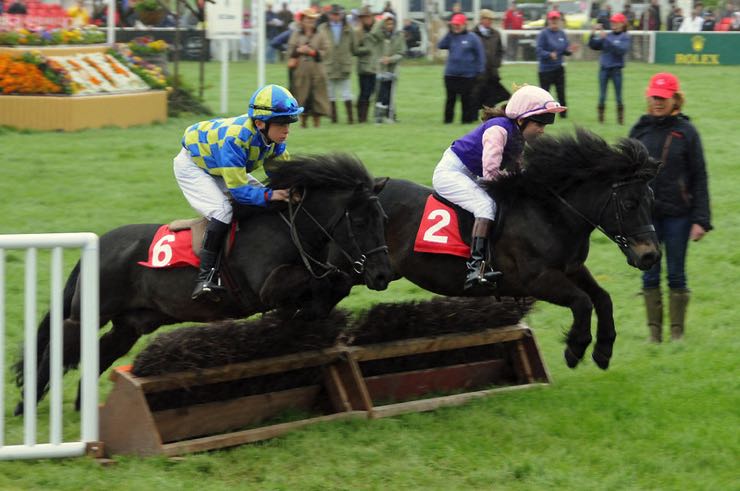
The “National” horse race offering in Britain and Ireland is certainly extensive, with a total of 29 currently available for staying chase fans. Such is the popularity of the Grand National though, that the use of that title extends far beyond the world of professional horse racing.
The Football Mascot Grand National may now sadly be defunct – although the Mascot Gold Cup is still available for fans of people in furry suits – but there are plenty of “other” nationals which do still take place in the UK, including the following.
Isle of Wight Grand National
This popular tourist event tops the bill when it comes to the strictly amateur Grand Nationals. Taking place in March each year, the contest features obstacles such as the “Elmsworth Ejector”, “Dunsbury Drop” and “Francesca’s Frolic”. Whilst being a relatively fun event, and open to all riders, horses and ponies, there is nevertheless still on course betting available.
Shetland Pony Grand National
These most diminutive of creatures aren’t left out of the Grand National program. Taking place at a range of differing venues, the race sometimes features hurdles, and sometimes doesn’t, but is always entertaining. The ponies are all ridden by children, with any money raised going to a designated charity each year. If there’s one race certain to raise a smile, it may well be this one.
Greyhound Grand Nationals
Both English and Irish greyhound racing have their own Grand National events, no doubt inspired by horse racing’s Aintree original. Both contests feature hurdles, with the English version – which now takes place at Central Park Stadium in Kent – having first been run back in 1927. The Irish race followed one year later in 1928 and is held at Curraheen Park in County Cork.
Virtual Grand National
Introduced in 2017 as an additional feature of the Aintree Grand National build up, this computer-generated contest uses the declared national field, combined with a range of variables, to produce a virtual race and result. The race took on a much higher profile in 2020 due to the cancellation of the real Grand National as a result of the 2020 global health crisis.
A pixelated version of the previous Welsh Grand National winner, Potters Corner, came out on top in that 2020 edition – with the £2.6 million made by the betting industry being donated to the fight against the virus.